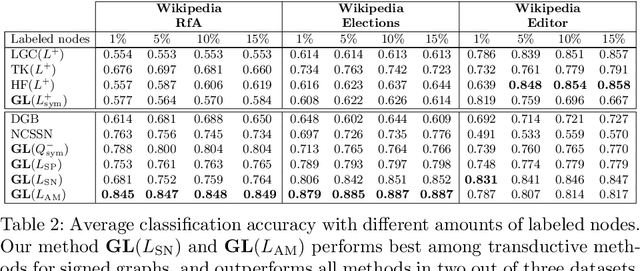Jessica Bosch
Node classification for signed networks using diffuse interface methods
Sep 07, 2018



Abstract:Signed networks are a crucial tool when modeling friend and foe relationships. In contrast to classical undirected, weighted graphs, the edge weights for signed graphs are positive and negative. Crucial network properties are often derived from the study of the associated graph Laplacians. We here study several different signed network Laplacians with a focus on the task of classifying the nodes of the graph. We here extend a recently introduced technique based on a partial differential equation defined on the signed network, namely the Allen-Cahn-equation, to classify the nodes into two or more classes. We illustrate the performance of this approach on several real-world networks.
Generalizing diffuse interface methods on graphs: non-smooth potentials and hypergraphs
Nov 18, 2016



Abstract:Diffuse interface methods have recently been introduced for the task of semi-supervised learning. The underlying model is well-known in materials science but was extended to graphs using a Ginzburg--Landau functional and the graph Laplacian. We here generalize the previously proposed model by a non-smooth potential function. Additionally, we show that the diffuse interface method can be used for the segmentation of data coming from hypergraphs. For this we show that the graph Laplacian in almost all cases is derived from hypergraph information. Additionally, we show that the formerly introduced hypergraph Laplacian coming from a relaxed optimization problem is well suited to be used within the diffuse interface method. We present computational experiments for graph and hypergraph Laplacians.
 Add to Chrome
Add to Chrome Add to Firefox
Add to Firefox Add to Edge
Add to Edge